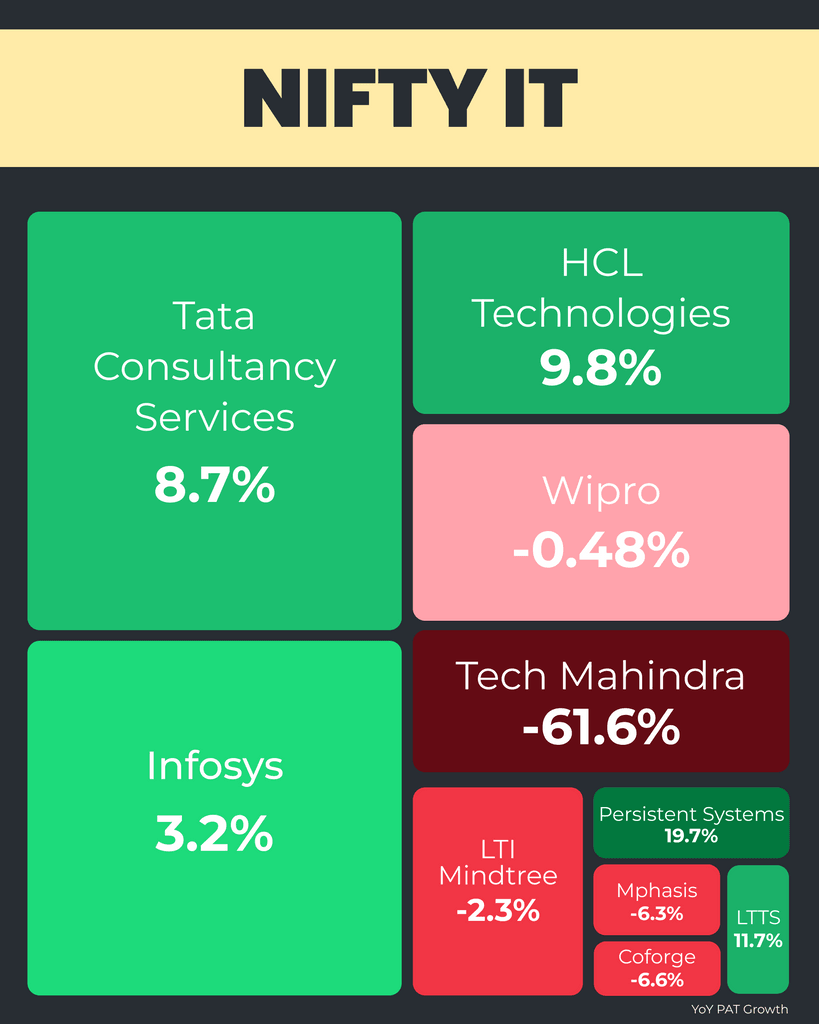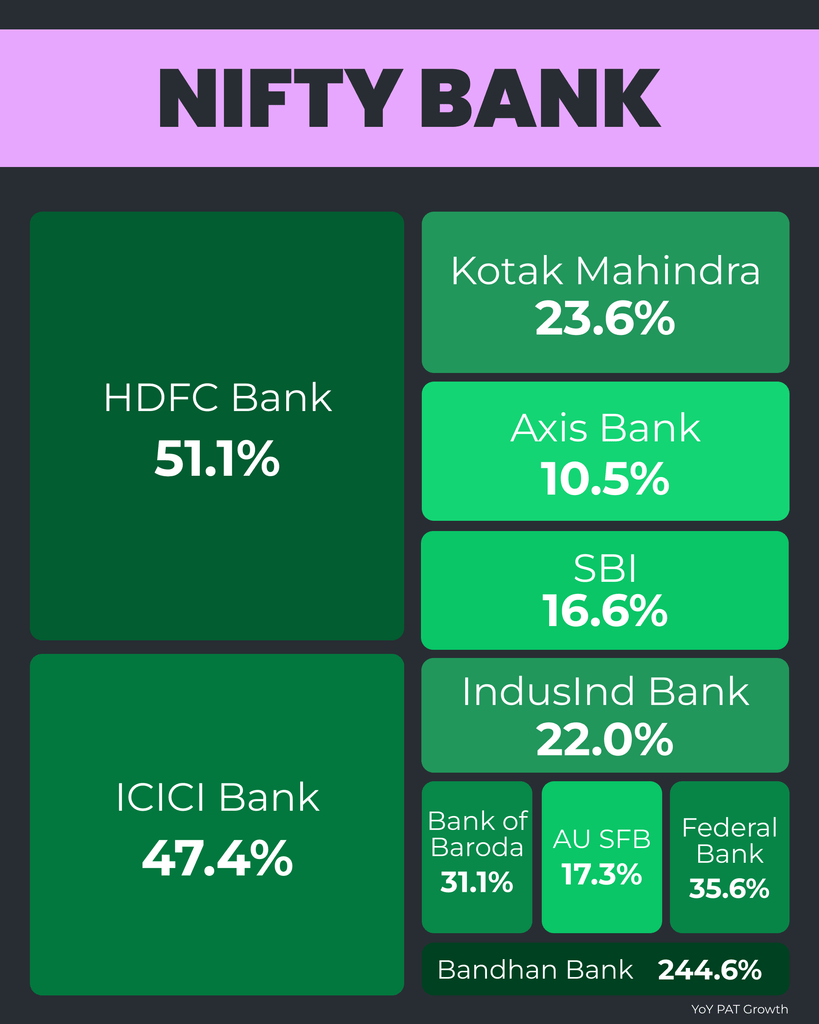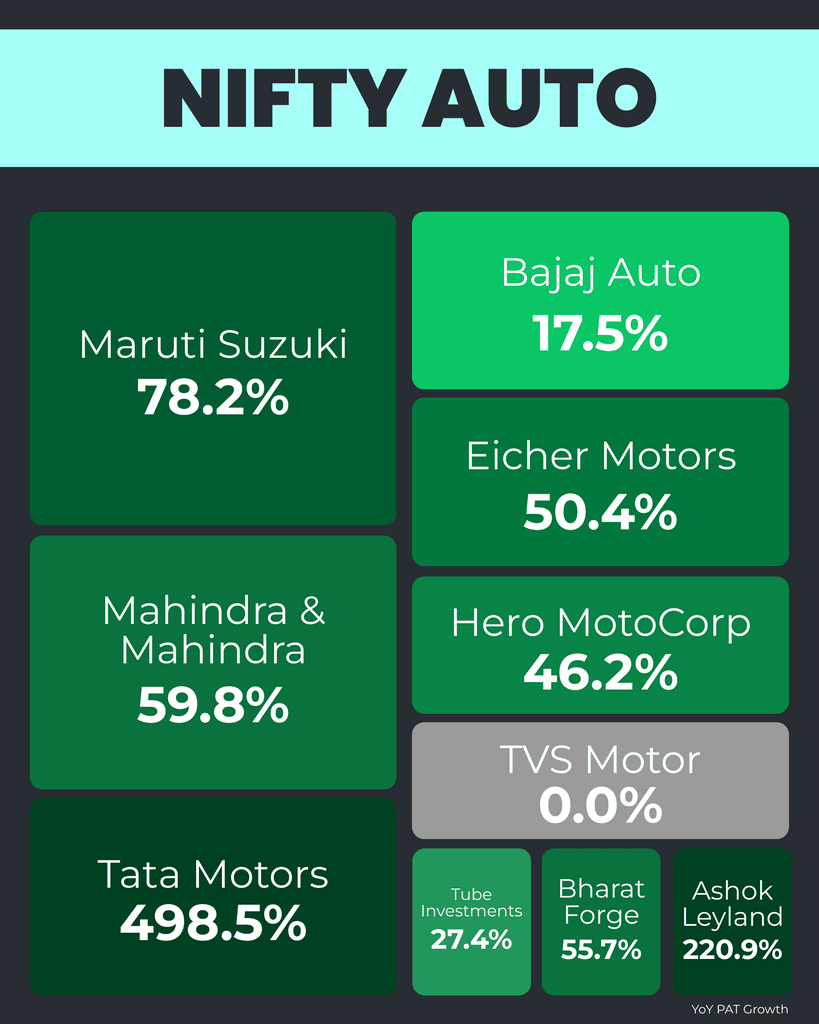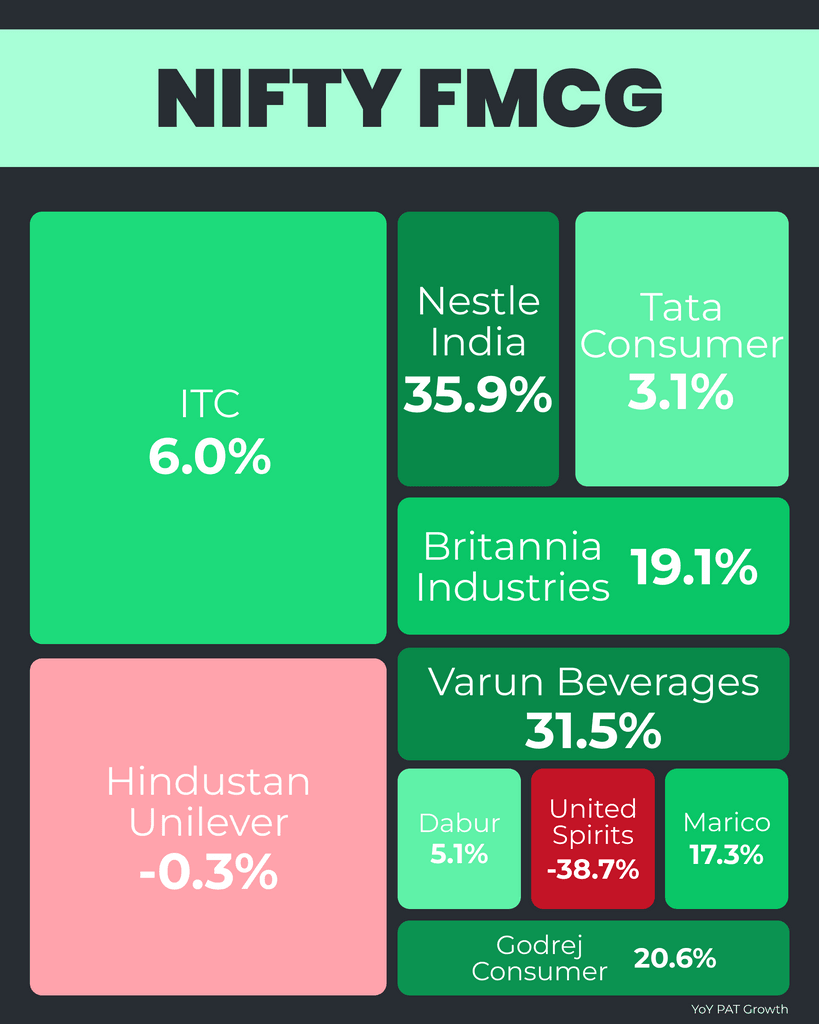
How did key sectors perform in Q2’FY24?
Major results for the September quarter are out, and to make things easie, we summarized them for you!
Here’s what you should know about these sectors 👇
IT Sector
Revenue Growth Slowdown: The USD revenue growth experienced a significant slowdown (due to tight financial conditions and enhanced geopolitical tensions globally) – the weakest in the decade ex-COVID – led by reduced transformation and discretionary spending by clients.
Wage Bill and Headcount Trends: Wage bill growth for IT is at 8% YoY, and headcount is contracting YoY. If demand does not improve, wage bill growth is expected to moderate.
Stabilizing Margins: EBITDA margins for the IT sector have stabilized, although they remain below the 10-year median. The worst phase of margin deterioration may be behind as companies reduce headcount, which could act as a cushion for earnings.
Caution on Demand Revival: Demand revival is important for sustained growth in the IT sector. The deal pipeline improved across all the IT companies and should augur well in revenue growth of FY25.
Pharma Sector
Profitability Trends: PAT growth outpaces EBITDA which outpaces revenue growth, aided by softening raw material costs, cost optimization, and favorable operating leverage. Overall margin expansion remains key trend.
Capex Comparison: The Pharma sector exhibits the lowest capex growth among all industries, suggesting a focus on efficiency rather than extensive capital investment.
Performance Dynamics: Smaller and mid-sized companies in the Pharma sector are surpassing large caps across various metrics, including margins and demand growth.
Management Commentary: Industry leaders highlight an improving demand scenario, coupled with the softening of raw material (RM) and key starting material (KSM) prices in the second half of FY24.
Banking Sector
Strong Credit Growth: Banks’ credit growth continues to remain strong, but it is no longer accelerating and now stabilizing at high levels Going ahead, we expect it to moderate in line with the nominal GDP slowdown
NIMs Dynamics: NIMs are facing pressure, primarily due to the anticipated repricing of banks’ cost of deposits at higher rates. RBI’s data indicates a prolonged period of pressure on banks’ NIMs.
Temporary Opex Cost Surge: Opex costs continue to remain high, attributed to a continued focus on branch expansion. This should normalize as operating leverage kicks in.
Unsustainable Reduced Credit Costs: Currently, credit costs for banks are notably below the general trend, and the normalization of these costs could negatively impact profit growth. Among banks, PSU banks and NBFCs in the SMID segment are surpassing their large-cap peers, primarily due to lower credit costs.
Auto Sector
Sales Growth Perspective: Premium auto segment, including high-end SUVs and bikes, is thriving, while low-end 2-wheelers and small cars face stagnation. Overall YoY growth appears robust, but the base effect contributes to this perception; the 5yr CAGR remains consistent.
EBITDA Margin Expansion: EBITDA margins surpass the 10-year median and reaching a decade-high. This is attributed to better realizations/mix, resulting in higher average selling prices, and easing commodity prices.
Capex and Cash Flow: The sector recorded the highest capex growth across all industries, fueled by strong growth in operating cash flow.
Profitability Dynamics: Smaller auto companies exhibit higher PAT growth compared to larger peers, despite larger players growing faster in terms of revenue.
FMCG Sector
Weak Consumption & Volume Growth: Weak top-line growth was experienced particularly in lower-end consumption. Despite disinflation in prices, volume growth in FMCG is not picking up, indicating an unusual trend. This is attributed to rural distress.
Resilient Margins: Despite top-line challenges, the sector maintains robust margins, with stability in input prices, placing emphasis on demand as a critical factor in shaping future margins.
Festive Season Impact: Expectation of a spurt in Q3FY23 due to the festive season, with a noticeable increase in YoY advertising spends.
Resurgence of Local Players: Local competitors, notably in detergent bars, tea, biscuits, edible oils, and hair oils, are re-emerging, intensifying competition and impacting edible oils players with substantial price cuts.
Disclaimer: https://share.market/terms-conditions






